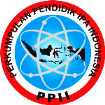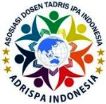Desain dan Konstruksi Prototype KIT Proyek STEM Sebagai Media Pembelajaran IPA SMP Secara Daring pada Topik Aplikasi Listrik Dinamis
Abstract
The Covid-19 pandemic has a significant impact on the quality of the science learning process. Online learning restricts students from directly interacting with science tools and materials. It takes effort from science educators to facilitate students in direct learning activities (hands on activity). This research is an attempt to facilitate students in learning by doing activities. In general, this study aims to provide a STEM project KIT that students can use in online-based junior high school science learning. Based on the results of the study in the analysis phase, the researcher has identified and designed three simple STEM projects that can be built as applications for the Dynamic Electricity concept. The three STEM projects are the Fruit Electric Energy Content Exploration Project, the Flood Alarm Model Making Project, and the Micro-Hydro Power Plant Model Building Project. For the purposes of these three student STEM projects, the researcher has built a KIT with stages including: tool and material selection, assembly, and expert validation. This research has produced a prototype of the Dynamic Electricity Application STEM Project KIT which is declared valid and feasible as a medium for junior secondary science learning, both for online and offline learning.
Kata kunci: dynamic electrical applications, design and validation, STEM project KITs, online science learning
ABSTRAK
Pandemi Covid-19 memberikan dampak yang signifikan terhadap mutu proses pembelajaran IPA. Pembelajaran daring membatasi siswa sehingga tidak dapat berinteraksi secara langsung dengan alat-alat dan bahan IPA. Perlu usaha dari para pendidik IPA untuk memfasilitasi siswa dalam aktivitas belajar secara langsung (hands on activity). Penelitian ini merupakan salah satu usaha untuk memfasiltasi siswa dalam aktivitas learning by doing tersebut. Secara umum penelitian bertujuan menyediakan perangkat KIT proyek STEM yang dapat digunakan siswa dalam pembelajaran IPA SMP berbasis daring. Berdasarkan hasil kajian pada fasa analisis, peneliti telah mengidentifikasi dan mendesain tiga proyek STEM sederhana yang dapat dibangun sebagai aplikasi konsep Listrik Dinamis. Ketiga proyek STEM tersebut adalah Proyek Eksplorasi Kandungan Energi Listrik Buah-buahan, Proyek Pembuatan Model Alarm Banjir, dan Proyek Pembuatan Model Pembangkit Listrik Mikrohidro. Untuk keperluan ketiga proyek STEM siswa tersebut, peneliti telah membangun KIT dengan tahapan meliputi: pemilihan alat dan bahan, perakitan, dan validasi pakar. Penelitian ini telah menghasilkan sebuak prototype KIT Proyek STEM Aplikasi Listrik Dinamis yang dinyatakan sah dan layak sebagai media pembelajaran IPA SMP, baik untuk pembelajaran daring maupun luring.
Kata kunci: aplikasi listrik dinamis, desain dan validasi, KIT proyek STEM, pembelajaran IPA daring
Full Text:
PDFReferences
Bozkurt Altan, E., & Ercan, S. (2016). STEM education program for science teachers: Perceptions and competencies. Journal of Turkish Science Education, 13(Specialissue), 103–117.
Branch, R, B. (2009). Instructional Design: The ADDIE Aproach. New York: Springer.
Bryan, A & Volchenkova, K. N. (2016). Blended Learning: Definition, Models, Implications for Higher Education. Bulletin of the South Ural State University Series “Education. Education Sciences,” 8(2), 24–30.
Ejiwale, J,A. (2013). Barriers to Successful Implementation of STEM Education. Journal of Education and Learning, 7(2), 63-74.
Gonzalez, H. B., & Kuenzi, J. (2012). What Is STEM Education and Why Is It Important? Congressional Research Service, (August), 1–15.
Ismail, Permanasari, A., Setiawan, W. (2016). STEM Virtual Lab: An Alternative Practical Media to Enhance Student’s Scientific Literacy, Jurnal Pendidikan IPA Indonesia, 5(2), 239-246.
Kenndey, T, J & Odell, M, R, L. (2014). Engaging Students In STEM Education. Science Education International, 25(Issue 3), 246-258.
Lalima, D., & Lata Dangwal, K. (2017). Blended Learning: An Innovative Approach. Universal Journal of Educational Research, 5(1), 129–136.
Murnawianto, S., Sarwanto, S., & Rahardjo, S. B. (2017). STEM-Based Science Learning in Junior High School: Potency for Training Students’ Thinking Skill. Pancaran Pendidikan, 6(4).
Nugroho, O. F., Permanasari, A., & Firman, H. (2019). The Movement of STEM Education in Indonesia: Science Teachers’ Perspectives. Jurnal Pendidikan IPA Indonesia, 8(3), 417–425.
Poon, J. (2013). Blended learning: An institutional approach for enhancing students’ learning experiences. Journal of Online Learning and Teaching, 9(2), 271.
Sudjana, N dan Rivai, A.(2019). Media Pengajaran. Jakarta: Sinar Baru Algesindo.
Thi To Khuyen, N., Van Bien, N., Lin, P.-L., Lin, J., & Chang, C.-Y. (2020). Measuring teachers’ perceptions to sustain STEM education development. Sustainability, 12(4), 1-15
Zulirfan, Z, Yennita, Y & Rahmad, M. (2020). STEM at Home: Provide Scientific Activities for Students During the Covid-19 Pandemic, URICSE(2020), Vol. 1655(2020), IOP Publishing.
DOI: http://dx.doi.org/10.24014/jnsi.v4i1.11446
Refbacks
- There are currently no refbacks.

Journal of Natural Science and Integration
E-ISSN: 2620-5092 P-ISSN: 2620-4967
Published By:
Department of Science Education, Faculty of Education and Teacher Training,
State Islamic University of Sultan Syarif Kasim Riau, Indonesia
Mailing Address:
Jl. H.R Soebrantas Km. 15 No. 155
Kelurahan Simpang Baru
Kecamatan Tuah Madani, Pekanbaru, Riau, Indonesia
Email: jnsi.tadrisipa@uin-suska.ac.id
Indexed By:
Journal of Natural Science and Integration is licensed under a Creative Commons Attribution 4.0 International License.


_-_Copyy2.png)






.jpg)
.png)
.jpg)
.jpg)




